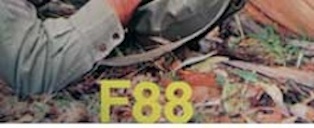The Minié ball (or minie ball) is a type of muzzle-loading rifle bullet named after co-developer, Claude-Étienne Minié. It came to prominence in the Crimean War and American Civil War. Invented in the 1840s by the French Army captains Montgomery and Henri-Gustove Delvigne, it was designed to allow rapid muzzle loading of rifles, an innovation that brought about the widespread use of the rifle as a mass battlefield weapon. The design of the ball had been proposed in 1823 as the Cylindro-conoidal bullet, but was not adopted.
Invented in the 1840s by the French Army captains Montgomery and Henri-Gustove Delvigne, it was designed to allow rapid muzzle loading of rifles, an innovation that brought about the widespread use of the rifle as a mass battlefield weapon. The design of the ball had been proposed in 1823 as the Cylindro-conoidal bullet, but was not adopted.
It was a conical-cylindrical soft lead bullet, slightly smaller than the intended firearm barrel's bore (see caliber), with (originally) four exterior grease-filled grooves and a conical hollow in its base. As designed by Minié, the bullet had a small iron plug in the base whose purpose was to drive forward the bullet and, under the pressure of powder gases, obturate the bullet to fill the hollow space and expand the lead skirting to grip the barrel's rifling. As finally adopted by the United States Government before the Civil War, however, the skirt of the bullet base was made slightly thinner and the plug was omitted, as the pressure of the powder gas alone was sufficient to expand the skirt to engage the rifling. Also, as adopted by the U.S. Government, only three exterior grease-filled grooves were used, instead of four.
As adopted, the bullet could be quickly removed from the paper cartridge with the gunpowder poured down the barrel and the bullet pressed past the muzzle rifling and any detritus from prior shots. It was then rammed home with the ramrod, which ensured that the charge was packed and the hollow base was filled with powder.
When fired, the expanding gas pushed forcibly on the base of the bullet, deforming it to engage the rifling. This provided spin for accuracy, a better seal for consistent velocity and longer range, and cleaning of barrel detritus. A test in Vincennes in 1849 demonstrated that at 15 m (15 yards) the bullet was able to penetrate two boards of poplar wood, each 17 mm (2/3 inch) thick and separated by 50 cm (20 inches). Soldiers of the time spread rumors that at 1100 m (1,200 yards) the bullet could penetrate a soldier and his knapsack and still kill anyone standing behind him, also killing any person in a line of 15.
The Minié ball produced terrible wounds on those struck in battle. The high-caliber rounds easily shattered bones, and in many cases the attending surgeon simply amputated the limb rather than risk a typically fatal secondary infection. The American Civil War, which often had many thousands of infantrymen armed with this type of rifle, resulted in mass casualties on a scale which was inconceivable to contemporary strategists.
©
2025
The Kings Armoury. All Rights Reserved.
GENERAL DISCLAIMER: While The Kings Armoury and Military Guns Australia puts great effort into providing accurate, high-quality information on this website, the instructions, advice, opinions and any other content offered through this website are provided without warranty of any kind, expressed or implied. Each firearms owner is responsible for his/her own safety and should use caution, common-sense and careful research before using any firearm in any way.





